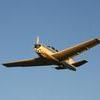Cylinder head/barrel separation at 14,500ft.
-
Members Online
- kerry
- Nathaniel_H
- gabez
- M20S Driver
- Kevin Westbrook
- mluvara
- Marc_B
- LardLad
- Scooter
- bigmo
- GeeBee
- Ragsf15e
- hammdo
- glbtrottr
- Gee Bee Aeroproducts
- 201Steve
- John Mininger
- MDMooney
- AspiringOwner
- Lax291
- mooniac58
- PT20J
- DC_Brasil
- Glen S.
- swdirtrider
- 201er
- TCC
- redbaron1982
- Skyland
- TangoTango
- George Braly
- FoxMike
- carusoam
- takair
- bsuts3
- Aerodon
- Shortround
- Jacopa
- Robm
- phxcobraz
- UteM20F
- Justin Schmidt
- jeremyc209
- BravoWhiskey
- patrickf
- Mooney in Oz


Recommended Posts
Join the conversation
You can post now and register later. If you have an account, sign in now to post with your account.